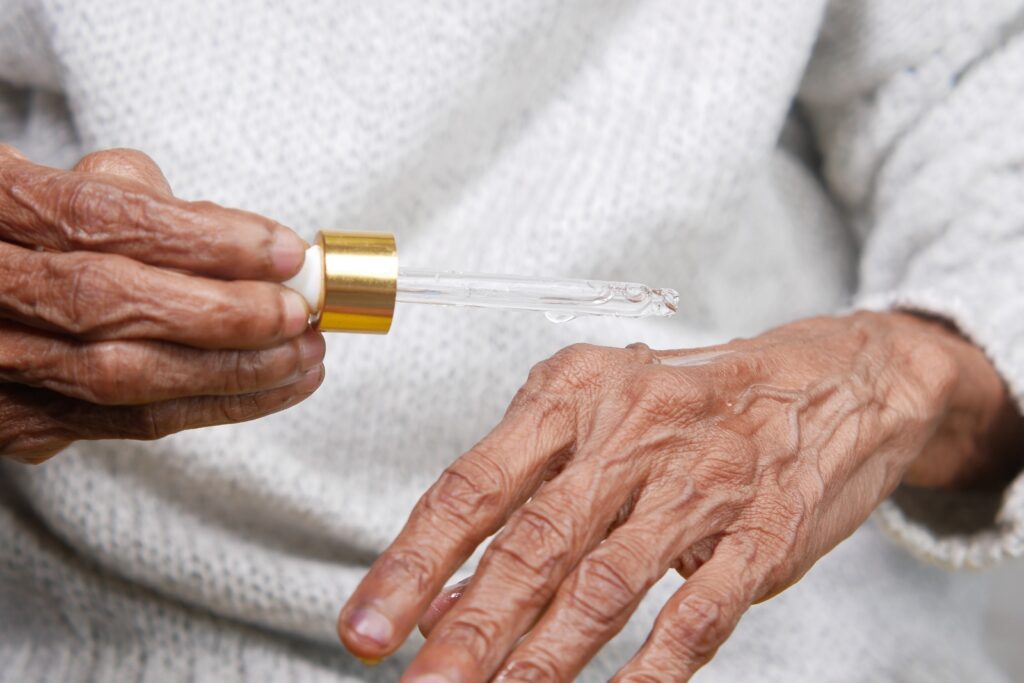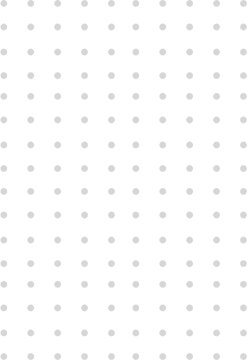Gout
Gout is a complex and throbbing form of arthritis. Extra deposition of uric acid crystals in and around the joints causes swelling and intense pain, commonly known as gout attacks. Its major target is your foot, especially the big toe. Gout is a treatable disease and could be reversed by medication along with diet and lifestyle modification.

What Is Gout?
Gout is a form of inflammatory arthritis causing swelling and pain in one or more joints due to uric acid crystallization in the joints. It usually affects the big toe but could also be found in other joints like the knee, foot, ankle, wrist, hand, and elbow.
Who Is Affected By Gout?
Anyone could be affected by gout. It commonly developed earlier in men than women. Men physiologically have higher uric acid levels and are three times more prone to the disease than women. It usually affects women after menopause, the period when their uric acid level is elevated. Predisposing factors for its occurrence are as follows:
- Obesity
- Diabetes
- Hypertension (high blood pressure )
- Nephrological disorders
- Congestive heart failure
- Genetics (family history)
- Dietary origin
- High animal protein diet intake
- High fructose intake
- Significant alcohol intake
- Diuretics (water pills) intake
What Causes Gout?
Urate crystals accumulated in the joints cause the inflammatory condition and severe pain at the site. High uric acid levels result in urate crystallization. Purines are broken down and form uric acid. Purines are substances that are naturally present in the body and also consumed via diet. They are found in red meat or organ meat (liver). Seafood rich in purine is trout, tuna, mussels, anchovies, and sardines. Alcoholic beverages and fructose-enriched juices or fruits also elevate uric acid levels.
Under normal physiological functioning uric acid is dissolved in the blood and excreted through the kidney via urine. However, when uric acid levels got elevated or the kidney couldn’t function efficiently to withdraw it from the body, it starts depositing in the joints. Uric acid is deposited in the form of sharp needle-like crystals causing pain and inflammation in the joints.
Does Fructose Cause Gout?
High sugar content does affect our waistline leading to obesity. Obesity is the primary cause of several underlying diseases such as., diabetes, cardiovascular disorders, etc. meanwhile high sugary drinks and fruits may set off gout.
Fruits and honey are rich in fructose. Similarly, artificial sweeteners used in syrups and sodas do have fructose in them. Fructose is metabolized by the body and purines are released as a by-product. Purine is further metabolized to produce uric acid. You may have a gout attack even after a few minutes of soda or sugary drink intake.
Relationship Between Insulin Resistance And Uric Acid?
Certain medical conditions associated with insulin resistance are among the leading cause of gout. The ailments include obesity, hypertension (high blood pressure), diabetes, etc. Insulin resistance and uric acid are directly proportional to each other. The rise in insulin resistance will reduce uric acid clearance from the body eventually leading to elevated uric acid levels. The serum uric acid levels are higher in type 2 diabetes and are linked with insulin resistance syndrome.
Types/phases Of Gout
There are four phases of gout depending upon its severity. These are
- Asymptomatic hyperuricemia
- Acute gouty arthritis
- Intercritical gout
- Chronic tophaceous gout
What Are The Symptoms Of Gout?
A gout attack is a painful episode of gout. The attack is quite painful and sudden. Its symptoms will for a week or two. Symptoms in affected joints during the attack are as follows:
- Redness
- Intense pain
- Swelling
- Stiffness
- Warmth (as hot as fire feeling on the joints)
- Tenderness (sensitive to even light touch)
Frequency Of Gout Attack
The frequency of the attack may vary. Few people get them more frequently while others may take years for the next episode. If it remains untreated, frequency might increase with more severe symptoms.

Complications Of Gout
Individuals having gout may lead to few complications, such as:
Recurrent Gout
After complete recovery, gout may reoccur several times each year. If it remains untreated, may lead to multiple joint abnormalities.
Advanced Gout
Urate crystals deposition underneath the dermis gave rise to nodules known as tophi. They become inflamed and hot to touch during gout attacks. Tophi grows in different areas like on hands, fingers, elbows, etc.
Kidney Stones
Urate crystals formed in the urinary tract would develop into kidney stones. These stones are very painful and resulted in urine blockage.
Diagnosis
A rheumatologist would examine you by considering the following parameters:
Signs and Symptoms
He will ask you about the duration and episodic pattern of your symptoms.
Physical Examination
He will physically examine the joints for pain, redness, warmth, and swelling i.e the cardinal signs of inflammation.
Blood Work
For analyzing uric acid levels in the blood. Although it is not a confirmatory diagnostic tool for gout. An elevated level of uric acid doesn’t necessarily lead to gout.
X-ray Imaging
X-ray imaging of the affected joints aids to rule out the source of arthritis (joint inflammation).
Ultrasonography
USG utilizes sound waves for urate crystals or tophi detection in the joints
Dua-Energy Computerized Tomography (DECT)
It involves a union of multiple x-ray images taken from various angles for urate crystal visualization.
Joint Fluid Test (Aspiration)
This technique involves needle usage for aspirating fluid from the joints. Uric acid crystals in the fluids will be seen under a microscope. This test is used for differential diagnosis of gout from other bacterial infections.
How To Treat Gout?
The rheumatologist would prescribe a few medicines to soothe its symptoms. These are as follows:
- NSAIDs (non-steroidal anti-inflammatory drugs) are used for pain and swelling management. NSAIDs should not be prescribed to patients with nephrological (kidney) disorders, stomach ulcers, or other medical conditions.
- Colchicine is an oral medicationprescribed to patients with acute attack (not for chronic). It acts as a pain reliever and anti-inflammatory drug.
- Corticosteroids can be taken as a pill or as injectable to ease pain and inflammation.
- Drugs for lowering uric acid in the body and preventing future episode includes:
- Allopurinol (oral)
- Probenecid (oral)
- Febuxostat (oral)
- Pegloticase (intravenous infusion)
Prevention
Lifestyle Changes For Gout Prevention
Certain modification in lifestyle proves to be very beneficial in gout prevention.
Increasing your water intake would keep you hydrated and in turn, your kidneys would work more efficiently. It would aid in flushing out uric acid from the body via urine.
Regular exercise for weight loss. An obese individual would have elevated levels of uric acid and more stress on joints. So, regular exercise would help to reduce weight and the symptoms associated with gout.
Dietary Changes
Purines enriched diet should be restricted as they act as a trigger for uric acid accumulation in the body. Below is the list of the dietary item rich in purine and should be avoided:
- High fructose sugary drinks or food
- Red meat
- Organ meat (liver)
- Alcohol
- Shellfish
- The protein of animal origin
Alternative Medications
As there are certain drugs which promote uric acid deposition in the body so should be used. Patients can use alternative medicine to meet the cause. Following medicines are prohibited for gout patients:
- Diuretics (water pills)
- Immunosuppressants
How To Manage A Gout Attack?
Symptoms associated with a gout attack could be managed by adopting the following measures:
- Restrict alcoholic beverages and soft drinks
- Plenty of water intake
- Keep joints on elevated levels
- Ice pack therapy of the affected joints
- Don’t put weight or pressure on the joints
How Does Dr.Waseem Treat Gout?
Dr.Waseem is not only a renowned dietician and fitness trainer but a myth buster too. He is among the pioneers in Pakistan for his “Diabetes Reversal Program”. He has treated his patients with several metabolic syndromes just by dietary and lifestyle management.

Keto Diet For Treating High Uric Acid
A myth in our society regarding uric acid is that a keto diet would lead to elevated uric acid levels in the body. Dr.Waseem elaborated on how a therapeutic ketogenic diet is significant in gout. Uric acid has antioxidant properties. It is produced endogenously by the body via fructose. Uric acid can be lowered by reducing sugar or carbohydrates in the diet. Organic apple cider vinegar and drinking plenty of water are beneficial in lowering uric acid.
Dr.Waseem shares his therapeutic ketogenic diet plan, which is as follows:
- 5% carbohydrates in the diet from vegetables (cauliflower, cucumber, etc), nuts, and keto-friendly fruits (berries).
- 75% fats from cream, olive oil, desi ghee, butter, coconut oil, and cheese.
- 20% protein from boiled eggs, beef, chicken, mutton, or flax seeds.
The Keto diet proves to be beneficial in treating insulin resistance syndrome and eventually uric acid. Low carb and high fat intake is a ketogenic diet. An instantaneous reduction in carbohydrates while elevating fat content in the diet would lead to a physiological process known as ketosis. It is a metabolic process that shifts energy utilization from carbohydrates source to fats when dietary changes are ongoing. Fat provides energy to the brain by broken down into ketones in the liver.


An Ultimate Solution to your Fitness & Health Problems
The Ginnastic Health Center In Islamabad is a state-of-the-art clinic with one of its kind modern health services in Islamabad that is offering a complete range of treatments for a variety of health care concerns including chronic illnesses and pain management.
